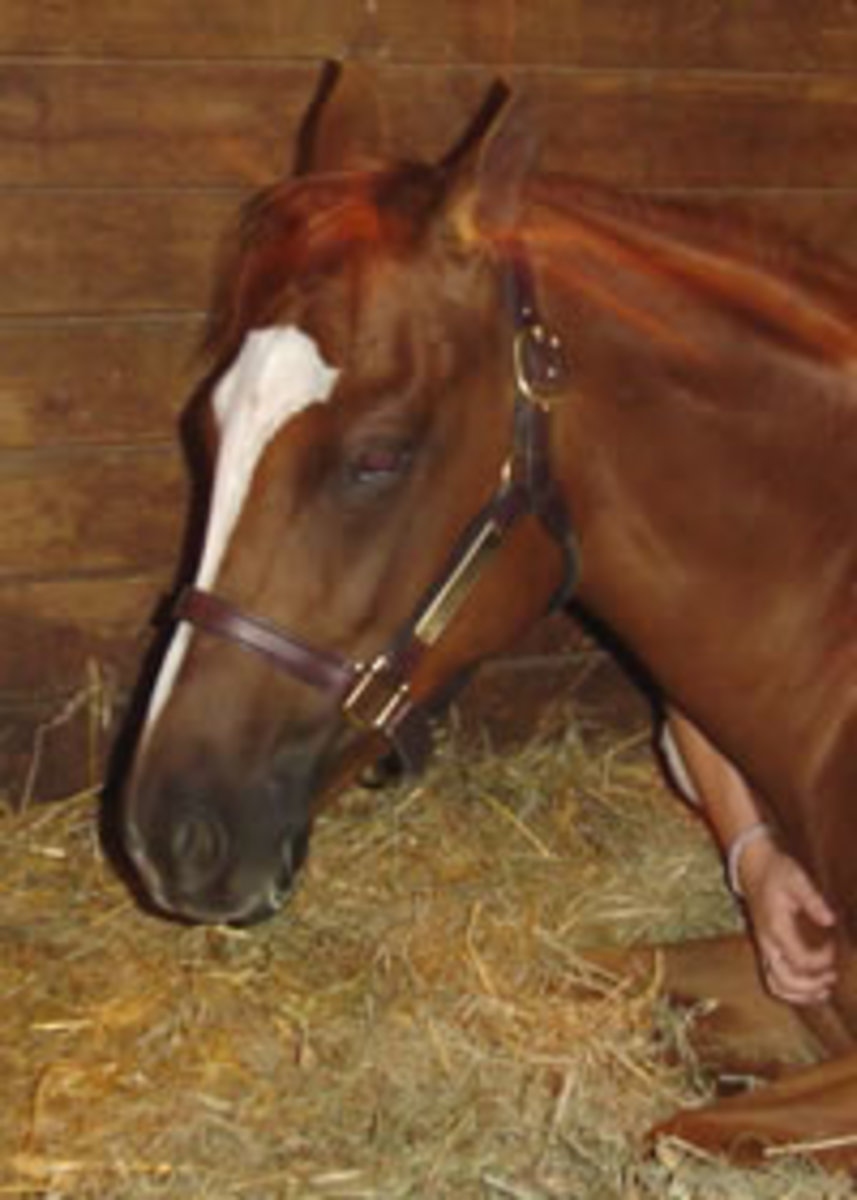
In the August 2004 issue of EQUUS Magazine, we described a new therapy called acyclovir that shows promise in combating neurological complications from equine herpesvirus type-1 (EHV-1). Students, employees and horses at the University of Findlay came too close for comfort to the virus in 2003.
The University of Findlay, an Ohio institution well-known for its equine studies program, was forced to cancel all activities at its English riding facility from late-January through April 2003, following a deadly herpesvirus outbreak.
Between January and February, 13 horses at the facility died or were euthanatized as a result of the viral illness; about 20 other horses had shown signs of neurologic impairment. The Ohio Department of Agriculture confirmed that herpesvirus type-1 (EHV-1) was responsible for the outbreak, according to a University of Findlay spokesperson.
EHV-1, which can cause abortions in pregnant mares, is associated with several forms of relatively mild disease, including rhinopneumonitis. But some rare EHV-1 strains produce myeloencephalopathy, an inflammation of the blood vessels that supply the spinal cord and brain that can lead to incoordination, paralysis and death.
The virus seemed to move swiftly through the 138 horses at Findlay’s English riding facility, with 85 percent becoming ill in the first 72 hours after the initial cases were diagnosed. The earliest signs of illness were fever, malaise and loss of appetite. Within a week, 30 horses were showing neurological impairment.
The horses were treated with anti-inflammatory medications and an antiviral drug used in humans, and at least five were sent to the Ohio State University for more intensive treatment.
None of the 300 horses kept at the university’s Western riding and preveterinary medicine program facility, located several miles away, became ill.
A quarantine of the university’s equestrian complexes was established immediately after the first EHV-1 cases were diagnosed, to remain in effect until three weeks after the last report of illness.
Located 50 miles south of Toledo, the University of Findlay has about 3,300 undergraduate students, of which almost 400 participate in equine programs. In 2001 the school’s equestrian teams won both the English and Western Intercollegiate Horse Show Association national championships.
Herpesvirus strains include:
- Equine herpesvirus 1 (EHV-1). A major cause of rhinopneumonitis, EHV-1 can also infect the placental walls of pregnant mares, causing abortion, and in rare cases the virus can attack the central nervous system, producing signs ranging from mild incoordination to paralysis.
- Equine herpesvirus 2 (EHV-2). Widespread among horses, this virus is not considered to be a cause of respiratory disease, although it has been implicated in inflammation of the eyes and pharynx. In addition, it’s possible that infection with EHV-2 lowers a horse’s resistance to more-serious diseases.
- Equine herpesvirus 3 (EHV-3). Unlike the other equine herpesviruses, which are principally associated with respiratory disease, EHV-3 causes pustular lesions on the genitals of stallions and mares. It is spread by breeding infected animals. Although the lesions are painful, the disease does not affect fertility or cause any long-term injury.
- Equine herpesvirus 4 (EHV-4). Once considered a subtype of EHV-1, EHV-4 is also a major cause of rhinopneumonitis, and it is occasionally implicated in equine abortions. However, EHV-4 has never been known to cause neurological signs.
- Equine herpesvirus 5 (EHV-5). Found in the respiratory tracts of as many as 100 percent of the horses in several different study groups, EHV-5 has not been linked to any illnesses.
This article first appeared in the April 2003 issue of EQUUS Magazine.








